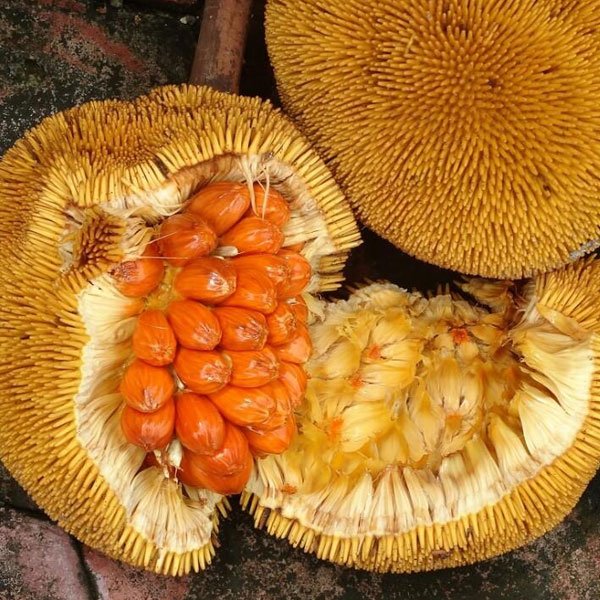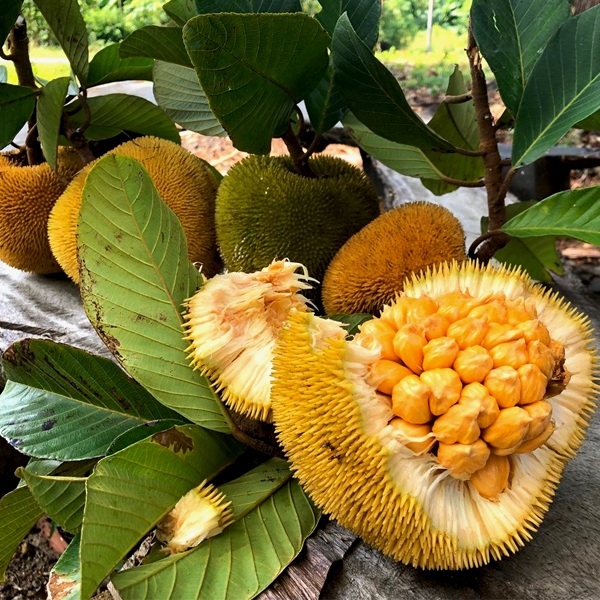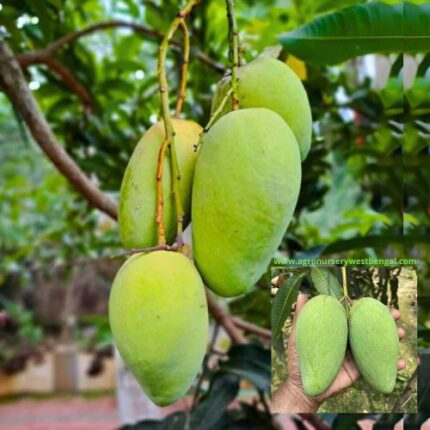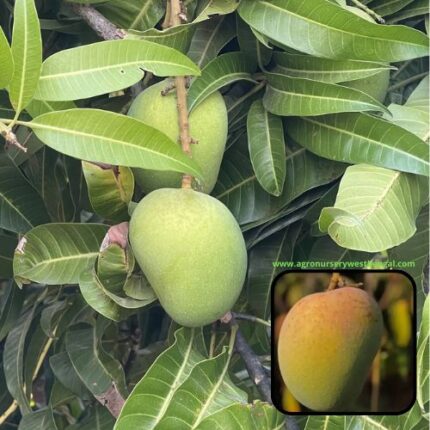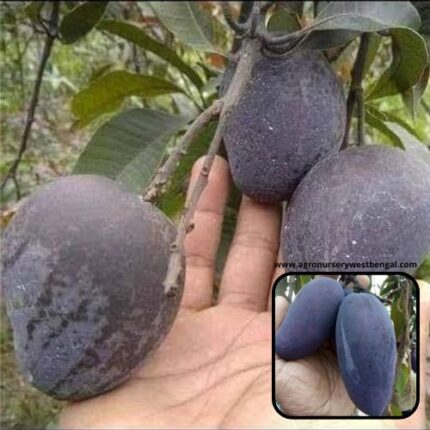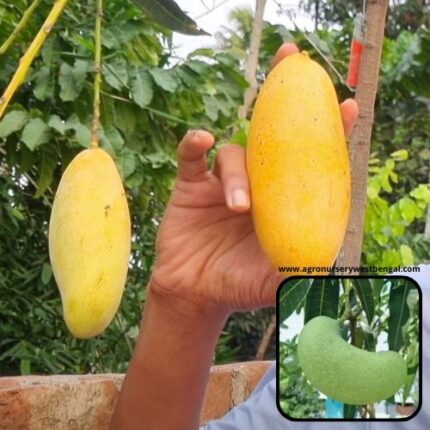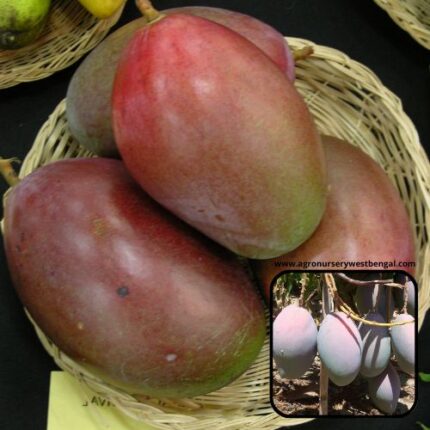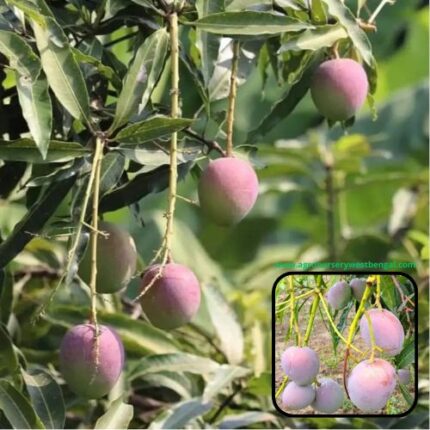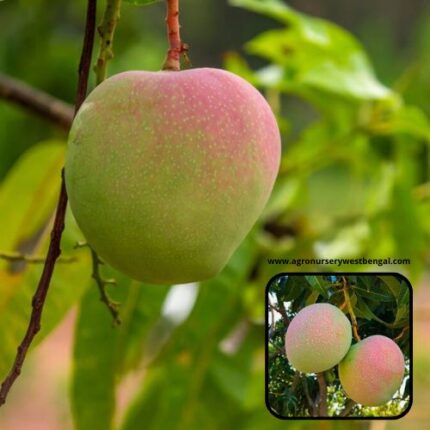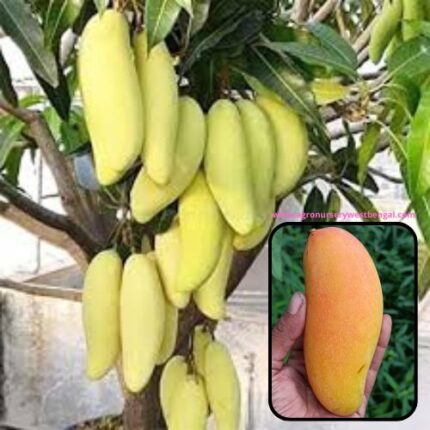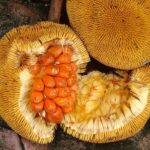
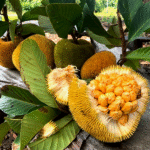
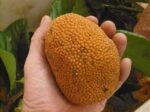
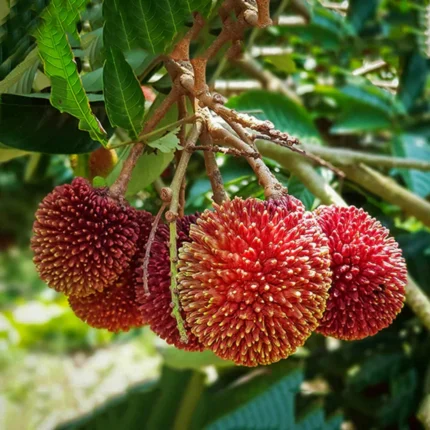
Pulasan fruit plant
₹2,999 Original price was: ₹2,999.₹1,999Current price is: ₹1,999.

Coffee beans plant
₹1,499 Original price was: ₹1,499.₹949Current price is: ₹949.
Keledang fruit plant
₹2,999 Original price was: ₹2,999.₹2,099Current price is: ₹2,099.
Category: Fruit Plants
Description
The Keledang, scientifically known as Artocarpus lanceifolius, is a fascinating and somewhat rare tropical fruit from the same genus as the more familiar jackfruit and breadfruit. Native to Southeast Asia, particularly Malaysia and Indonesia (especially Borneo), it’s highly prized for its unique flavor.
Here’s a detailed description of the Keledang fruit:
Appearance:
- Shape and Size: Keledang fruits are typically oval to round, somewhat resembling a miniature jackfruit or cempedak. They usually measure around 8-12 cm (3-5 inches) long and 7-8 cm (2.5-3 inches) in diameter.
- Skin (Rind): The rind is thick, rough, and somewhat bumpy or warty, similar to its Artocarpus relatives, but less spiky than durian. When ripe, the skin changes color from green to shades of yellow, orange, or olive to brown. It can be quite firm and requires some effort to open.
- Flesh (Aril): Inside the thick rind, the edible flesh, known as the aril, is bright orange to yellowish-orange. It’s arranged in segments that surround the seeds, similar to how jackfruit segments are organized. The flesh is translucent and jelly-like.
- Seeds: Each segment of flesh typically contains a single, large, flattened seed. These seeds are relatively easy to remove from the flesh and are also edible.
Taste and Texture:
- Flavor Profile: The taste of Keledang is often described as a unique and delicious blend of several tropical fruits. Common comparisons include:
- Jackfruit and Mangosteen: This is a very common description, highlighting a sweet, aromatic base from the jackfruit side, combined with a subtle tartness and perhaps a creamy, delicate note from the mangosteen side.
- Lychee and Longan: Some describe it as a sweet, tropical flavor reminiscent of these fruits.
- Pineapple and Durian (without the strong smell): The sweetness can have a tropical tang, and some might detect a very mild hint of durian-like creaminess without the pungent aroma.
- It’s generally sweet and aromatic.
- Texture: The flesh is typically soft, juicy, and somewhat chewy or gummy. It has a smooth mouthfeel and is not fibrous.
Tree and Growing Conditions:
- Tree: The Keledang tree (Artocarpus lanceifolius) is a medium to large evergreen tree, capable of reaching heights of up to 25-35 meters (80-115 feet). It has a slender, upright growth habit with a symmetrical crown of glossy green leaves. The leaves are pinnate, dark green, and can grow quite long.
- Growth Habit: Like other Artocarpus species, the fruits are borne directly on the trunk and larger branches (cauliflory).
- Climate: Keledang thrives in hot, humid tropical climates with abundant rainfall. It is sensitive to cold temperatures and frost, making it unsuitable for cultivation in temperate regions. It is typically found in lowland tropical rainforests, often near riverbanks or swampy areas, preferring well-drained, fertile soils.
- Cultivation: Keledang trees can be grown from seeds but are slow to mature and can take several years (2-3 years for grafted plants, longer for seedlings) to start producing fruit. They are not as widely cultivated as jackfruit and are often harvested from wild or semi-cultivated trees.
Uses and Nutritional Value:
- Fresh Consumption: The primary use of Keledang fruit is fresh consumption. The sweet, aromatic flesh is simply scooped out of the rind.
- Culinary Uses: The fruit can also be used in desserts, jams, jellies, and beverages. The seeds are edible after being roasted or boiled and are said to have an almond-like flavor.
- Nutritional Benefits: While detailed nutritional information specific to Keledang may be limited due to its lesser-known status, like other tropical fruits, it is generally believed to be a good source of:
- Vitamins: Rich in Vitamin A and Vitamin C.
- Dietary Fiber: Supports digestive health.
- Antioxidants: Contains beneficial plant compounds that combat oxidative stress.
- Traditional Medicine: In some local traditions, Keledang has been used in folk medicine for its potential health benefits, including properties that may help with inflammation or have anticancer effects (though more scientific research is needed in this area).
- Timber: Beyond its fruit, the Keledang tree is also valued for its timber, which is heavy, durable, and used for construction, furniture, and boat building.
The Keledang is truly an exotic gem, offering a unique taste experience for those fortunate enough to find and try it.

